Changes in the landscape of Premier League club ownership
 Premier League clubs are some of the most valuable sports organisations in the world. Manchester United (13), Liverpool (20), and Manchester City (23) are even ranked amongst 2023’s 25 most valuable sports teams. With the potential financial benefits and sporting prestige, the clubs are an intriguing investment for wealthy investors and companies.
Premier League clubs are some of the most valuable sports organisations in the world. Manchester United (13), Liverpool (20), and Manchester City (23) are even ranked amongst 2023’s 25 most valuable sports teams. With the potential financial benefits and sporting prestige, the clubs are an intriguing investment for wealthy investors and companies.
In recent years, the Premier League has seen several high-profile ownership changes through significant stake investments and complete takeovers. Including a Saudi Arabian led consortium buying Newcastle United, American Todd Boehly’s BlueCo taking over Chelsea and the recent investment in Manchester United by English businessman Sir Jim Ratcliffe. The market remains active with clubs (e.g. Liverpool, Brentford, and Sheffield United) on the lookout for new (minority) investors or, like Everton, in advanced stages of a takeover.
Over time, regulations have become stricter to protect clubs from falling into the hands of unqualified and unsuitable parties. In addition, financial regulations now limit the direct impact (new) owners can have, especially on player acquisitions.
So, which Premier League clubs have changed owners recently? Is there a shift to a different type of owner and how does regulation play into this?
Chelsea first Top Six takeover since 2010
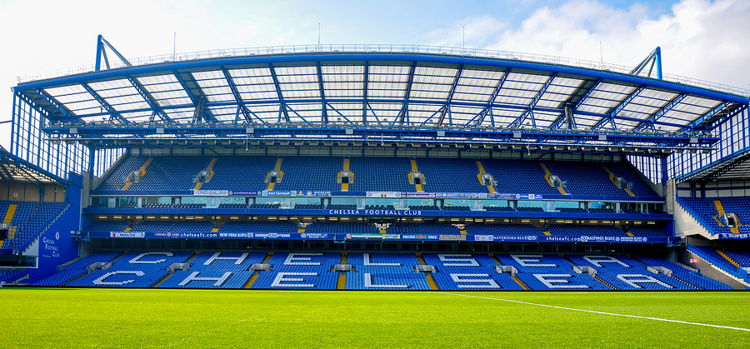
One of the most prominent takeovers in recent years is that of Chelsea. In May 2022, Todd Boehly and Clearlake Capital, under the holding company BlueCo, bought the London club for £4.25 billion (£2.5 billion for the shares and a £1.75 billion investment commitment)1. It was the first acquisition of a so-called Top Six club since Fenway Sports Group bought Liverpool for a reported £300 million in 2010.
Last two takeovers of Chelsea FC
| Who | When | Reported amount |
|---|---|---|
| Roman Abramovich | 2003 | £140 million |
| BlueCo (Boehly et al.) | 2022 | £4.25 billion (shares: £2.5 billion & investment: £1.75 billion) |
BlueCo paid 30 times what Roman Abramovich paid (£140 million2) for the club back in 2003. The Russian oligarch put the club up for sale (March 2022) due to the Russian-Ukrainian war. During his almost 20 years in charge, the Blues won two Champions League, two Europa League and five Premier League titles.
Ratcliffe interested in a Premier League side

Science History Institute, CC BY-SA 3.0, via Wikimedia Commons
Sir Jim Ratcliffe also made a £4.25 billion bid to buy Chelsea but he failed in his attempt to become (part) owner of a Premier League side.
He succeeded when he officially became a minority shareholder, with 27.7 percent, of Manchester United in February 2024. Over a year earlier (November 2022), the Glazer family announced that as part of a strategic review they would consider whether a (part) sale would be beneficial.
The deal was struck in December 2023, but only became official after approvement by the Premier League Board, by passing the Owners’ and Directors’ Test (OADT), and a newly introduced Independent Oversight Panel. The English businessman and his company INEOS have received full control over sporting operations, and thus have a significant say at the 13-time Premier League champions.
Significant PL investments and takeovers since 2021

The changes in ownership at Chelsea and Manchester United are just two of nine significant (defined by the League as a stake of at least 10 percent) ownership changes at Premier League clubs since 2021.
Apart from Chelsea (£2.5 billion for all shares1), there were complete takeovers at Newcastle United and Bournemouth. A consortium of the Saudi Arabian Public Investment Fund (PIF), PCP Capital Partners, and RB Sports & Media acquired 100 percent of Newcastle’s shares for a reported £305 million. While Black Knight Football and Entertainment, a holding company, took over Bournemouth for a reported sum between £100 million and £120 million in December 2022.
Investments with significant stake

In August 2021, John Textor acquired a 45 percent stake in Crystal Palace. The Eagles are now part of the American businessman’s company Eagle Football Holdings.
In November of the same year, Czech Daniel Kretinsky acquired a 27 percent stake in London rivals West Ham United for around £180 million to £200 million. Reducing the stake of the other shareholders David Sullivan (to 38.8 percent), Vanessa Gold (to 25.1 percent, passed on from David Gold after his passing) and Tripp Smith (to eight percent).
A majority stake change happened at Southampton in January 2022. The Saints still played in the Premier League when Sports Republic, a company of Serbian Dragan Solak, acquired an 80 percent stake in the club for £100 million. At the end of the 2022/23 season, the club got relegated to the Championship.
In December 2023, investment company Atairos acquired a 20 percent stake in V Sports, the parent company of Aston Villa.
Acquisitions of and significant investments (>10%) in Premier League clubs since 2021
| Club | When | What |
|---|---|---|
| Crystal Palace | August 2021 | John Textor’s Eagle Football Holdings acquires 45% |
| Newcastle United | October 2021 | Consortium of Public Investment Fund, PCP Capital Partners, and RB Sports & Media complete takeover |
| West Ham | November 2021 | Czech Daniel Kretinsky acquires 27% |
| Southampton* | January 2022 | Serbian Dragan Solak’s Sports Republic acquires 80% |
| Chelsea | May 2022 | Todd Boehly and Clearlake Capital (BlueCo) complete takeover |
| Manchester City | 2nd half 2022 | China Media Capital sells shares to other stakeholders Newton Investment and Development LLC (previously Abu Dhabi United Group) and Silver Lake |
| Bournemouth | December 2022 | Black Knight Football and Entertainment (including William P. Foley and Cannae Holdings) complete takeover |
| Aston Villa | December 2023 | Investment company Atairos acquires 20% in V Sports, the club’s parent company |
| Manchester United | February 2024 | Sir Jim Ratcliffe acquires 27.7% |
* Played in the Premier League at the time, have since been relegated.
Shareholders shake up at City Football Group
 The shareholders of Manchester City’s parent company City Football Group went through a shake-up in the second half of 2022.
The shareholders of Manchester City’s parent company City Football Group went through a shake-up in the second half of 2022.
China Media Capital sold most of their shares to the two other shareholders Newton Investment and Development LLC (taken over from the Abu Dhabi United Group, same owner) and investment firm Silver Lake. Newton Investment is owned by Sheikh Mansour and holds 81 percent, while Silver Lake has an 18.16 percent stake.
Landscape Premier League owners
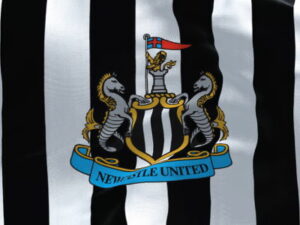 The 2023/24 Premier League clubs are equally (majority) owned by individuals and/or families on one hand and investment or holding companies on the other.
The 2023/24 Premier League clubs are equally (majority) owned by individuals and/or families on one hand and investment or holding companies on the other.
Furthermore, there are 10 clubs whose owners with a significant interest have American ties. While there are nine clubs whose significant shareholders are from the UK. Two have Saudi Arabian ties (Newcastle United and Sheffield United), while Wolves in owned by Chinese conglomerate Fosun International since 2016.
Sort (majority) ownership of 2023/24 Premier League clubs
| Individuals or family | Investment or holding company |
|---|---|
| Arsenal | Aston Villa |
| Brentford | Bournemouth |
| Brighton and Hove Albion | Burnley |
| Crystal Palace | Chelsea |
| Everton | Liverpool |
| Fulham | Luton Town |
| Manchester United | Manchester City |
| Nottingham Forest | Newcastle United |
| Sheffield United | Tottenham Hotspur |
| West Ham United | Wolverhampton Wanderers |
Acquisitions and promotion
 Seven of the current 20 Premier League clubs did not play in England’s highest division when their owners acquired their majority or controlling stake. Luton Town were relegated to League Two at the end of the 2007/08 season. At which time, Luton Town Football Club 2020 (a consortium of supporters) took over the club.
Seven of the current 20 Premier League clubs did not play in England’s highest division when their owners acquired their majority or controlling stake. Luton Town were relegated to League Two at the end of the 2007/08 season. At which time, Luton Town Football Club 2020 (a consortium of supporters) took over the club.
It led them to their first Premier League season in 2023/24. Brentford, Brighton and Sheffield United were playing in League One when acquired. While Aston Villa, Nottingham Forest and Wolves played in the Championship at the time the current owners gained a controlling stake.
Highest owner investment by Premier League clubs

Apart from acquisition costs, owners tend to invest in their club (through capital increases). However, the amounts vary widely across the Big Five leagues and between clubs. UEFA3 observed that Premier League club owners invested €4.16 billion (with owner investment defined as the sum of balance sheet capital increases plus the net increase in owner loans) during a ten-year period (between 2011-2020 or 2012-2021 depending on submission of financial accounts).
27 percent more than the second highest league, the Serie A (€3.287 billion). Owners in Ligue 1 invested €1.665 billion in their clubs, the third most, even though the league was the fifth highest revenue generating league. La Liga owners invested a mere €507 million during the period. Explainable by Real Madrid and Barcelona, the two highest revenue generating (Spanish) sides, having no owner investments (due to their legal forms).
Manchester City invested the most

Of the Premier League clubs, it is Manchester City’s owners who invested the most with €1.609 billion. An amount that does not include investment in fixed tangible assets nor any related party sponsorship deals. The latter is something City certainly has.
The owners of AC Milan (€1.025 billion) and Inter (€810 million) invested the most in their club after City. Amongst English sides, Chelsea’s owners invested the second most (€694 million). [Note: period is prior to latest takeover.]
The owners of the other Top Six clubs invested significantly less through increasing balance sheet capital or increasing owner loans. The Glazer family invested €77 million in United, while the owners of Liverpool (€38 million) and Arsenal (€17 million) invested even less. Spurs’ owners did not invest anything in the club through these means.
However, in May 2022, Tottenham announced a capital increase of up to £150 million from ENIC, the majority shareholder. Providing the club with ‘greater financial flexibility and the ability to further invest on and off the pitch’.
Investment in stadium and training facilities

Spurs’ owners did invest the most into a new stadium and facilities during this period. The new 62,850-capacity Tottenham Hotspur Stadium opened in April 2019, and its expenses are part of the €1.686 billion the Spurs’ owners invested in fixed tangible assets. 281 percent more than the second highest club, Real Madrid (€443 million). Manchester City (€377 million) and Liverpool (€314 million) also invested over €300 million in fixed tangible assets (e.g. stadium and training facilities).
Across the whole Premier League, €3.589 billion was invested in stadiums and facilities. Spurs’ investment accounted for 47 percent of that, while the Top Six clubs combined accounted for 77 percent. Premier League clubs invested more than double the €1.65 billion invested by La Liga clubs. Ligue 1 clubs invested €1.419 billion during the observed decade, while Serie A clubs invested only €638 million. Which is 18 percent of what the Premier League sides invested.
Compared to transactions across the Big Five leagues
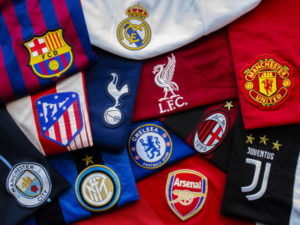 An analysis by Football Benchmark4 of the top 10 majority stake transactions across the Big Five leagues based on the reported considerations paid, shows that five of them involve English clubs. Furthermore, 80 percent of the transactions are carried out by American investors. While six of the deals occurred since 2020.
An analysis by Football Benchmark4 of the top 10 majority stake transactions across the Big Five leagues based on the reported considerations paid, shows that five of them involve English clubs. Furthermore, 80 percent of the transactions are carried out by American investors. While six of the deals occurred since 2020.
BlueCo (Todd Boehly et al.) paid the highest considerations, €2,942 million, for 100 percent of Chelsea’s shares in May 2022. Almost 2.5 times what American investors Redbird Capital Partners paid for AC Milan (€1,200 million) a month later. Third is the €1,181 million the Glazer family paid for 98 percent of United shares in 2005. The deal between Everton and 777 Partners, agreed upon in September 2023 but not yet approved by the Premier League Board and Independent Oversight Panel, ranks fourth (€754 million for 94.1 percent).
Newcastle United’s complete takeover for €360 million in October 2021 ranks eighth (fourth amongst English sides). While American John W. Henry’s (Fenway Sports Group) purchase of Liverpool for €342 million in October 2010 ranks ninth (fifth amongst English sides).
Premier League clubs in the top 10 majority stakes transactions in the Big Five leagues
| Club (top 10 rank) | Reported considerations paid (share) | Buyers (nationality) | When |
|---|---|---|---|
| Chelsea (1) | €2.942 million (100%) | BlueCo (USA) | May 2022 |
| Manchester United (3) | €1.181 million (98%) | Glazer family (USA) | June 2005 |
| Everton* (4) | €754 million (94.1%) | 777 partners (USA) | September 2023 |
| Newcastle United (8) | €360 million (100%) | Public Investment Fund (SAU) | October 2021 |
| Liverpool (9) | €342 million (100%) | John W. Henry (USA) | October 2010 |
* Yet to be approved by the Premier League Board and Independent Oversight Panel
The Owners’ and Directors’ Test governing investments

Sunfox, CC BY-SA 2.0, via Wikimedia Commons
To regulate investments to some extent, the Premier League introduced the ‘Fit and Proper Persons test’ in 2004. This has evolved into the current Owners’ and Directors’ Test (OADT) and outlines requirements that would prohibit someone from becoming or continuing as a club’s owner or director. Included are a range of criminal convictions, a ban by a sporting or professional body, or breaches of football regulations such as match fixing. Furthermore, potential parties will fail the test if they have influence or hold a significant interest (defined by a stake of at least 10 percent) in another Football League club.
In March 2023, clubs unanimously approved amendments and reforms to the OADT. An important change is that the Premier League OADT assessment is subject to review by an Independent Oversight Panel. An assessment now takes place with a 25 percent controlling stake (previously 30 percent) and Club Chief Executives and Relevant Signatories are also included. Furthermore, several disqualifying events have been added. Including parties subject to Government sanctions and those violating human rights.
Deal collapsed due to concerns
 The latter is likely a response to concerns around the Newcastle takeover. In 2020, a deal between the Public Investment Fund (PIF) and Newcastle collapsed due to hold ups surrounding PIF’s ties with the Saudi state (accused of human rights violations and sportswashing) and piracy claims.
The latter is likely a response to concerns around the Newcastle takeover. In 2020, a deal between the Public Investment Fund (PIF) and Newcastle collapsed due to hold ups surrounding PIF’s ties with the Saudi state (accused of human rights violations and sportswashing) and piracy claims.
Eventually these issues were resolved when the Premier League received legally binding assurances over the separation of PIF and the Saudi government. It led to the sale of Newcastle in October 2021.
For now, the OADT is one of the reasons why the agreed deal between Farhad Moshiri and 777 Partners for 94.1 percent of Everton’s shares is yet to be ratified. The Miami-based investment company also holds a stake in amongst others Sevilla, Hertha Berlin, Standard Liege, and Genoa. They were informed by the Premier League to provide more clarity on several OADT-points and their three-year plan for the club.
Abramovich disqualified as director of Chelsea
In March 2022, the Premier League Board disqualified then owner Roman Abramovich as a director of Chelsea, following the imposition of sanctions by the UK Government. Which were due to his ties with the Kremlin and the Russian-Ukrainian war.
Trend towards multi-club ownership

That UEFA and the Premier League update their regulations to adapt to changes in the ownership landscape and world is logical. It is expected they need to make further adjustments to adapt to the increasing occurrence of multi-club ownership.
In 2022, UEFA identified 31 multi-club investment transactions, including 11 minority stakes transactions and 20 majority stakes acquisitions, worldwide.5 It increased the total number of clubs worldwide that were part of a multi-club investment structure to over 180. Four years prior, this was less than 100 clubs, while it was below 40 in 2012.
Especially America-based investors are interested in such ownership structures, with a third (27) of the total multi-club investment groups originating in America.
Multi-club ownership in the Premier League

In the Premier League there are currently 12 clubs with shareholders with a significant interest who own more than one football club (excluding partnerships). There are also owners who have invested in various sports organisations (e.g. Glazer family own the Tampa Bay Buccaneers; Fenway Sports Group owns Boston Red Sox amongst others).
Owning multiple football clubs has several advantages. It spreads risk in case a team underperforms. Furthermore, it is easier to scout talent in various regions or to stall players at another related club to gain valuable playing experience.
Replicating the City Football Group
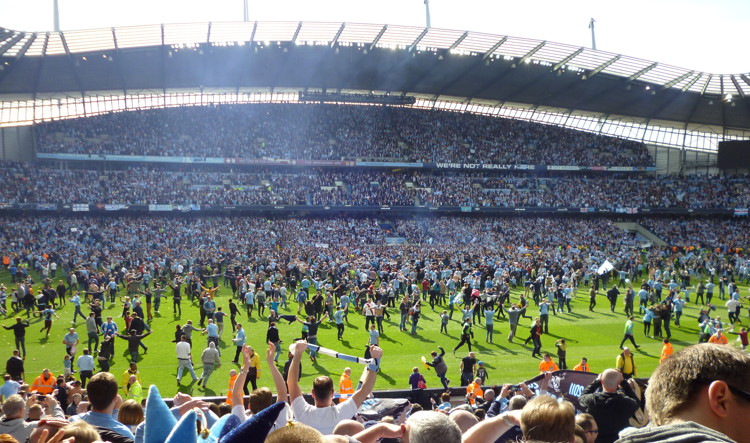
Oldelpaso, CC BY-SA 3.0, via Wikimedia Commons
Manchester City is the best-known Premier League club to be part of a multi-club parent company. The City Football Group was created in 2013, five years after City’s takeover by Sheikh Mansour’s Abu Dhabi United Group. Currently, the City Football Group owns 12 clubs worldwide (and has one partner club: Club Bolivar).
A strategy that others intend to copy. BlueCo, the company behind the Chelsea takeover, bought Ligue 1 side RC Strasbourg in June 2023. While Manchester United’s newest shareholder Ratcliffe and his company INEOS already owned OGC Nice and FC Lausanne-Sport. Nottingham Forest’s owner Evangelos Marinakis also owns Olympiacos (since mid 2010) and Portuguese side Rio Ave (since November 2023).
Several multi-club ownerships from Premier League clubs’ owners with a significant stake
| Premier League club | Owner with significant stake | Stake in other club(s) |
|---|---|---|
| Arsenal | Stan Kroenke – Kroenke Sports and Entertainment | Colorado Rapids (USA) |
| Aston Villa | V Sports | Vitóia S.C. (POR) |
| Bournemouth | Black Knight Football and Entertainment | FC Lorient (FRA), Auckland (AUS), Hibernian FC (SCO) |
| Brighton | Tony Bloom | Royale Union Saint-Gilloise (BEL) |
| Chelsea | BlueCo | RC Strasbourg (FRA) |
| Crystal Palace | Eagle Football Holdings | Olympique Lyonnais (FRA), Molenbeek (BEL), FC Florida (USA), Botafogo (BRA) |
| Manchester City | City Football Group | New York City (USA), Melbourne City (AUS), Yokohama F Marinos (JAP), Montevideo City Torque (URY), Girona (ESP), Shenzhen Peng City (CHN), Mumbai City (IND), Lommel S.K. (BEL), Troyes (FRA), Palermo (ITA), Bahia (BRA) |
| Manchester United | Sir Jim Ratcliffe | OGC Nice (FRA), FC Lausanne-Sport (SUI) |
| Newcastle United | PIF | Al-Nassr, Al-Hilal, Al-Ahli and Al-Ittihad (SAU) |
| Nottingham Forest | Evangelos Marinakis | Olympiacos (GRE), Rio Ave (POR) |
| Sheffield United | Abdullah bin Mosaad Al Saud | Beerschot (BEL), Kerala United FC (IND), La Berrichonne de Chateauroux (FRA) |
| West Ham | Daniel Kretinsky | Sparta Prague (CZE) |
Narrowing the portfolio of football clubs

Although there is a general trend towards more multi-club ownerships, there are also several owners who have disinvested, to focus their financial recourses or as they were forced to by regulations.
Tottenham’s owners, ENIC Sports Inc, held shares in up to six different European football clubs. In addition to Spurs, they were a shareholder of Slavia Prague, Rangers, AEK Athens, Vicenza Calcio, and FC Basel. Over time, they narrowed their portfolio, selling their shares in the other clubs and using their capital to increase their stake in the London club.
Brentford’s owner Matthew Benham also owned multiple clubs for several years. In 2014, he became majority shareholder of FC Midtjylland, introducing a data-driven approach to almost all facets of the club. However, in August 2023, he sold his shares in the Danish side.
Limitations of multi-club ownership

jamesboyes, CC BY 2.0, via Wikimedia Commons
To ensure the integrity of the European club competitions, UEFA’s multi-club ownership rule prohibits that investors have influence and decision-making power at more than one club. Red Bull Salzburg and Leipzig were the first to encounter this problem when both qualified for the Champions League. They are now both allowed to participate despite having the same parent company (Red Bull), as management and administrative control is in the hands of different parties.
The owners of several Premier League clubs had to adjust their portfolio structure for the same reason. Including V Sports, owners of Aston Villa, who bought 46 percent of Primeira Liga side Vitóia S.C. in February 2023. After both clubs qualified for the 2023/24 Europa Conference League, UEFA required V Sports to reduce its share in Vitória to 29 percent.
Owner of Brighton and Hove Albion, Tony Bloom, also had to adjust his investment in Belgian side Royale Union Saint-Gilloise (USG) after both clubs qualified for 2023/24 European competitions. Bloom is now a minority shareholder of USG, the club of which he was the majority owner since 2018.
Furthermore, the two clubs cannot interchange players through transfers or loans until at least September 2024.
The City Football Group may have to make similar adjustments to their portfolio when both Manchester City and La Liga side Girona qualify for the 2024/25 Champions League.
League’s limits on multi-club ownership
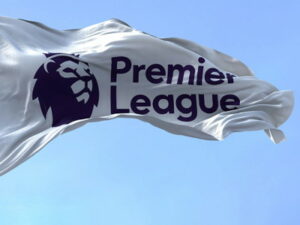 Around two-third of all national associations (36 top divisions) have rules in place to limit or restrict multi-level ownership at a domestic level.5 Ranging from a stake in a second club not being allowed to exceed a certain percentage (e.g. 10 percent) to complete bans.
Around two-third of all national associations (36 top divisions) have rules in place to limit or restrict multi-level ownership at a domestic level.5 Ranging from a stake in a second club not being allowed to exceed a certain percentage (e.g. 10 percent) to complete bans.
Premier League regulations (and the Owners’ and Directors’ Test) prohibits owners and directors to have a significant interest in or say about management or administration of another Football League club. The league would also like to ban related-party loans. However, in November 2023, clubs voted against a temporary ban. With twelve clubs in favour, they were two short of the two-third majority needed.
Conclusion
So, the ownership landscape of Premier League clubs has changed significantly in recent years and more major changes are expected. Especially the trend towards multi-club ownership has brought and will bring more wealthy individuals and investment companies to the Premier League.
However, how successful they all will be and how it will change European football and its regulations is yet to be seen.



